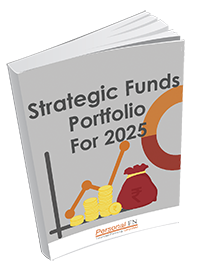When we invest, the essential objective is to earn a decent rate of return that can beat the inflation. Meaning, the returns should counter inflation and protect the ‘time-value’ of our hard-earned money.
But better inflation-adjusted returns (also known as real rate of return), comes with high risk.
If you are willing to take some investment risk, mutual funds–––particularly the equity-oriented ones–––are potentially a worthy option.
If you select equity mutual funds wisely (in congruence to yours needs), structure your portfolio strategically, and are willing to take some calculated risk; investing in mutual funds can prove to be a rewarding experience.
Want to learn how to select winning mutual funds? Watch this video:
I also recommend downloading this Money Simplified Guide:

PersonalFN’s Money Simplified Guide - 10 Steps to Select Winning Mutual Funds is an extremely valuable resource.
Note that every category of mutual fund: equity-oriented, debt-oriented, hybrid (mix of equity and debt), and solution-oriented have their distinctive risk traits. And within each of these categories, there are sub-categories.
For example, under equity-oriented mutual funds, as per the capital market regulators diktat on mutual fund categorisation and rationalisation, there are 10 sub-categories:
-
Large cap Fund
-
Large & Midcap Fund
-
Mid cap Fund
-
Small cap Fund
-
Multi cap Fund
-
Dividend Yield Fund
-
Value/Contra Fund
-
Focused Fund
-
Sectoral/Thematic Fund
-
ELSS (Equity Linked Savings Scheme)
Each of these have distinct characteristics defined by the regulator. For instance, a large cap fund is required to invest a minimum of 80% in equity & equity related instruments of large cap companies. Similarly, a multicap fund invests across large cap, mid cap, and small cap stocks with a minimum 65% investment in equity & equity related instruments.
Debt-oriented mutual funds, on the other hand predominantly invest in bonds, Certificate of Deposits (CDs), Commercial Papers (CPs), Treasury bills (T-bills), etc., depending on the investment mandate of the scheme, also carry certain risk traits. There are 16 sub-categories debt-oriented mutual funds:
-
Overnight Fund
-
Liquid Fund
-
Ultra-short duration Fund
-
Low duration Fund
-
Money market Fund
-
Short duration Fund
-
Medium duration Fund
-
Medium to Long Duration Fund
-
Long Duration Fund
-
Dynamic Bond Fund
-
Corporate Bond Fund
-
Credit Risk Fund
-
Banking and PSU Fund
-
Gilt Fund
-
Gilt Fund with 10-year constant duration
-
Floater Fund
Each of these have distinct characteristics defined by the regulator. For example, a Credit Risk Fund that invests minimum 65% of its total assets in corporate bonds below highest rated instruments——predominantly in AA and below rated instruments——has an exposure to credit risk, price risk, liquidity risk, and, of course, the interest rate risk integral to bond markets.
Similarly, a gilt fund that invests in government securities (G-secs) draws risk from macroeconomic undercurrents, such as (inflation trajectory, fiscal deficit, Indian rupee, current account deficit, economic growth, etc.) that shape the interest rate scenario in the country and the benchmark yield curve.
So, every category and sub-category of mutual funds carries risk traits.
[Read: 5 Vital Risks Involved In Debt Mutual Funds]
Risk, as you may broadly know is, a result or outcome which is other than what is/was expected.
So, anything other than what was expected is termed a ‘standard deviation’ in portfolio management parlance and this determines the risk of a mutual fund.
When you invest in mutual funds, do not merely go by the returns clocked; compare returns to risk for a more meaningful selection (assessing the Sharpe Ratio, Sortio Ratio, Roy Safety First ratio) , where you can gauge the risk-adjusted return of a mutual fund.
[Read: Why Comparing Returns To Risk Is More Meaningful]
Besides, when you gain access to mutual fund factsheets carefully evaluate: the portfolio characteristics of a fund (top-10 stocks, top-5 sectors, average maturity, credit rating profile, portfolio turnover, etc.), asset allocation, fund’s performance, expense ratio, fund manager credentials, and so on.
[Read here: What To Evaluate In A Mutual Fund Factsheet?]
The objective of doing this exercise is to recognise the traits of the fund, how it is faring, and to hold scheme/s in line with your risk profile and investment objectives.
If you are young and the objective is growth or capital appreciation; if you have the stomach for high-to-very high risk and a steady source of income; if you have an investment time horizon of at least five years; you have long-term financial goals to address viz. children’s education expenses, wedding expenses, and your own retirement needs, among others, you may set a higher allocation to equity-oriented mutual funds.
The mutual fund investors with a high-to-very high risk profile individual may consider a combination of large-and-mid cap, mid cap, small cap, value fund, focussed equity funds, and so on. But do note that during stretched market valuations, it best to avoid small-and-mid cap mutual funds unless you are addressing financial goals with time-horizons a decade away.
For a moderate-to-high risk profile, consider a combination of large cap funds, dividend yield funds, equity-hybrid funds, multi-cap funds, which can prove less volatile when equity markets turn turbulent.
If you have a low-risk profile, planning for short-term goals (which are less than 5 years away), and the investment objective is not high growth, but very modest returns; debt-oriented mutual funds would be appropriate. But again, take care to pick debt mutual funds judging the interest rate scenario and your investment time horizon.
Are you willing to take “Moderate Risk" for “High Rewards”?
Want to know of a time-tested strategy to reap incredible investment gains over the long-term with some risk?
Yes?

(Image source: pixabay.com)
I have something for you…
It is based on the "Strategic Portfolio Theory".
This clever strategy has been around for a long time...but known only to the successful investors.
It is based on the “core and satellite approach” to investing, which offer six key benefits:
✔ Facilitates optimal diversification;
✔ Reduces the risk to your portfolio;
✔ Enables you to benefit from a variety of investment strategies;
✔ Aims to create wealth cushioning the downside;
✔ Offers the potential to outperform the market; and
✔ Reduces the need for constant churning of your entire portfolio
The term “core” applies to the more stable, long-term holdings of the portfolio; while the term “satellite” applies to the strategic portion that would help push up the overall returns of the portfolio during certain market conditions.
In short, with the “core and satellite” strategy your portfolio can be strategically designed so that you can reap the benefits of two worlds, viz. short-term high-rewarding opportunities and long-term growth.
But, there are few rules to follow to create a strategic portfolio:
-
The selected mutual funds should be amongst top scorers in their respective categories. The portfolio should be built with a time horizon of at least 5 years
-
It should be diversified across investment style and fund management
-
Each mutual fund should be true to its investment style and mandate
-
They should be managed by experienced and competent fund managers and belong to fund houses that have well-defined investment systems and processes in place
-
Each fund should have seen at least three market cycles of outperformance
-
The portfolio should contain an adequate number of schemes in the right proportion. In short, it should carry the most optimum allocation to each scheme and investment style
-
The portfolio should not have more than six-seven mutual fund schemes
-
No two schemes should be managed by the same fund manager
-
Not more than two schemes from the same fund house should be included in the portfolio.
PersonalFN’s research states that 60% of the portfolio should be reserved for Core mutual funds and the remainder 40% should be invested in the Satellite mutual funds.
But what matters the most is the art of astutely structuring the portfolio by assigning weightages to each category of mutual funds and the schemes picked for the portfolio.
Moreover, with changes in market outlook, the allocation/weightage to each of the schemes, especially in the satellite portfolio, needs to change.
Wondering how lay investors can build a strategic portfolio with such hard work? With PersonalFN’s honest & unbiased research.
PersonalFN is proud to offer you the 2018 Edition of its Premium Report, "The Strategic Funds Portfolio For 2025"

Our research team, with their years of experience and extensive knowledge about mutual funds, have gone to great lengths to find out potentially the best and consistent performing mutual funds that have:
✔ Shown superior consistency in performance over a long period
✔ Shown stability and reliability across various market cycles
✔ Struck a better risk-return trade-off over time
✔ Been managed by process-driven mutual fund houses
✔ Rank highest in terms of active portfolio quality
✔ And much more!
All you have to do is consider investing your money in the funds recommended in the strategic portfolio, in the suggested allocation and you may reap benefits like you have never done before!
Excited? Subscribe to Your Ultimate Strategic Portfolio For 2025 Now!
Be a prudent and hold the best mutual fund schemes in your portfolio and be a successful investor.
Happy Investing!
Add Comments